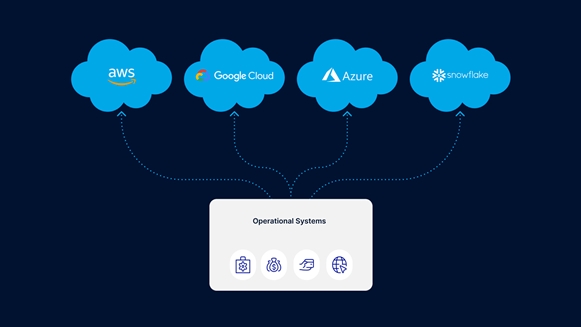By Bertrandt Delport, Country Host, BT South Africa
Spurred on by the pandemic, many organisations greatly accelerated their digital transformation plans over the past three years. Digital transformation became an existential necessity, which entailed migrating to or more fully adopting the cloud.
RELATED: Over 75% of firms to embrace Big Data, cloud computing, AI in 5 years
In particular, we saw multi-cloud become increasingly popular, being highlighted this year as one of the top five cloud trends to be aware of. In 2023, organisations are increasingly needing to contend with being in a multi-cloud environment.
It is important to differentiate between using multiple clouds versus multi-cloud. Using multiple clouds entails working with applications in different cloud platforms, with limited data exchanged between these two environments. For example, organisations may use Google’s cloud platform for analytics while simultaneously tapping Microsoft Azure for Office 365.
According to Gartner, using two or more cloud services is already established, with 81% of those using public cloud turning to multiple cloud environments to fulfil their requirements. The main reasons for multiple cloud adoption are to a) avoid being locked into a specific vendor, and b) take advantage of best-of-breed solutions.
Multi-cloud explained
In a multi-cloud environment, applications operate in a true hybrid model, continuously enabling the exchange of data between private and public clouds. Adopting a multi-cloud approach is more far-reaching than simply availing of different cloud providers.
Implementing multi-cloud is part of a progressive digital transformation strategy, which is critical to mitigating against disruptions technological innovations may pose to an organisation.
A multi-cloud environment also requires a new approach to management that combines the public and private clouds in ways previously unimagined. Further, it is expected to be the primary approach for companies in the foreseeable future, with global BT research revealing that 73% of businesses are planning to migrate to a fully software-defined data centre within the next two years.
Adopting the multi-cloud moves organisations closer to being able to unlock greater flexibility, agility, optimised performance, and enhanced cost savings. However, that can only be fully accomplished when the cloud strategy is built on distributed applications working in a true hybrid fashion.
Mastery at hand
Running a multi-cloud environment is one thing, mastering it in all its complexity and fully reaping its benefits is quite another.
Mastering the multi-cloud entails fitting together several key pieces.
First, organisations need to consider that not all their traditional IT solutions will work in the cloud, and opt instead for operating within a dynamic, hybrid environment. As obvious as it is, it bears stressing that a multi-cloud environment cannot be operated in the same way as the current (or legacy) one.
Businesses also cannot assume that pilot multi-cloud projects that were successful will function efficiently when scaled across their organisation.
Second, it is critical that organisations resist the temptation to view their network in isolation. Rather, multi-cloud implementations need to be approached holistically by integrating all relevant areas of their business. It is highly likely that new processes and skills will be required across the board, from network and data centre to security.
Strategy essentials
Beyond these initial steps, mastering the multi-cloud further entails designing an effective multi-cloud strategy. As with implementing a data strategy, organisations should ensure that cloud-based resources are optimised and integrated in conjunction with a well-managed multi-cloud strategy.
This is essential if businesses want to benefit from the speed, elasticity, innovation, availability, and costs savings that the multi-cloud can deliver.
Digging deeper into correct management, it means focusing on managing the delivery of services rather than physical assets. This also means guarding against misconfigurations which could lead to compromised security.
Lastly, another mistake to be wary of is provisioning one’s cloud to cope with peak demand. Not only does this lend itself to inefficient design, but it can also (and likely will at some point) lead to a shockingly high bill that the business was not prepared for.
Partnering for success
Mastering the multi-cloud does not mean you have to do it all on your own. A particularly effective strategy is to work with a reputable partner who already has a strong reputation and extensive expertise in managing both the public and private clouds.
Leveraging the skills of a partner who is well versed in managing hybrid cloud environments not only empowers the organisation, but it also gives a far better chance of ensuring that the multi-cloud environment runs optimally.
It is not sufficient anymore to just work with network and security specialists. The provider of choice should be able to deliver cloud security skills, a control framework to assess any gaps, and provide readily available assistance with ongoing compliance issues.
With this in place, organisations will be well positioned to not only keep up with the trend towards multi-cloud adoption, but they’ll be well on their way to mastering it, as they continue their digital transformation journey into the future.































